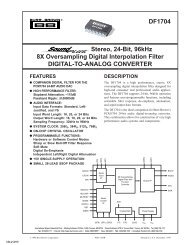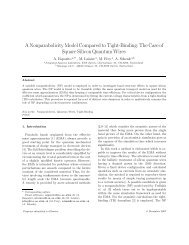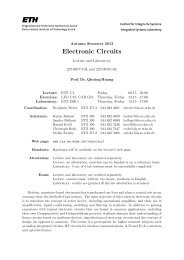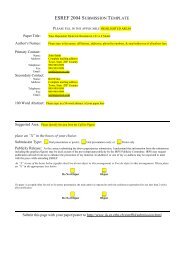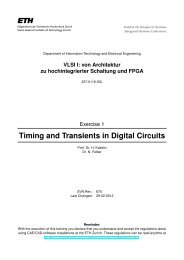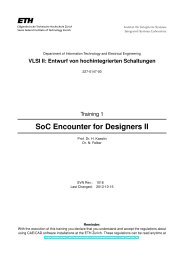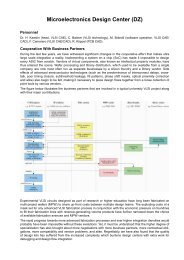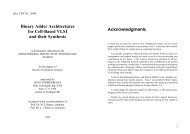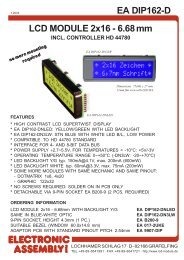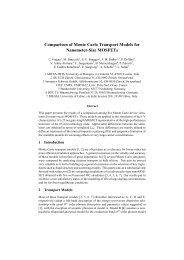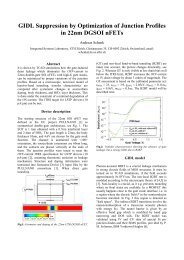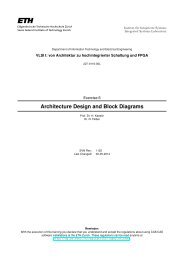Sample Solution Written Exam in VLSI I - Integrated Systems ...
Sample Solution Written Exam in VLSI I - Integrated Systems ...
Sample Solution Written Exam in VLSI I - Integrated Systems ...
You also want an ePaper? Increase the reach of your titles
YUMPU automatically turns print PDFs into web optimized ePapers that Google loves.
ii) Reformulate the process statement from l<strong>in</strong>e 38 to l<strong>in</strong>e 46 as selected signal (2)assignment.iii) Please describe at least three major differences between the process statement (2)and a concurrent/selected/conditional signal assignment.(c) Now, we consider both List<strong>in</strong>g 2 and List<strong>in</strong>g 3 and we choose N = 3.i) How many flip-flops do you expect when synthesiz<strong>in</strong>g this BCD-conversion (1)circuit?ii) How many clock cycles does it take to convert a 12-bit BCD number (N = 3) (2)and what is the latency of this circuit?iii) Bonus question: do not spend to much time on this question.(2)In a first version of the BCD-converter, the process statement <strong>in</strong> List<strong>in</strong>g 3,l<strong>in</strong>e 24–51 was replaced by the process statement given <strong>in</strong> List<strong>in</strong>g 4. Can youexpla<strong>in</strong> why the simulation with the process from List<strong>in</strong>g 4 was not work<strong>in</strong>g asexpected, while with the current version of the entity “Digit”, the simulationresult was correct?iv) Rewrite the process statement of List<strong>in</strong>g 4 (l<strong>in</strong>e 1 to l<strong>in</strong>e 11) without us<strong>in</strong>g (2)the process statement construct. You are allowed to use as many new signalsPage 19 of 30<strong>VLSI</strong> I <strong>Exam</strong> Summer 2009



